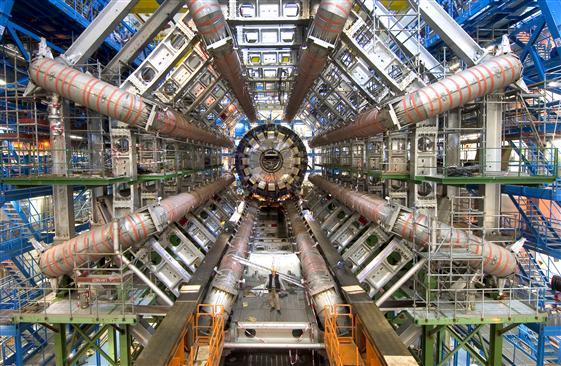Meet the FREYA partners: CERN
Many different organizations are involved in FREYA and in this blog post series we take a closer look at the partners and their work. This time you can read about CERN, the European Organization for Nuclear Research, located on the border of Switzerland and France.
What is the mission of your organisation?
At CERN, our work helps to uncover what the universe is made of and how it works. We do this by providing a unique range of particle accelerator facilities to researchers, to advance the boundaries of human knowledge. The Laboratory, established in 1954, is a prime example of international collaboration. CERN is run by 23 Member States, each of which has two official delegates to the CERN Council. The CERN Council is the highest authority of the Organization and has responsibility for all important decisions. It controls CERN’s activities in scientific, technical and administrative matters.
CERN’s mission is to:
-
Provide a unique range of particle accelerator facilities that enable research at the forefront of human knowledge.
-
Perform world-class research in fundamental physics.
-
Unite people from all over the world to push the frontiers of science and technology, for the benefit of all.
CERN is home for many facilities and experiments. Particularly noteworthy is the Large Hadron Collider, LHC, which is the world’s largest and most powerful particle accelerator. It first started up in September 2008, and remains the latest addition to CERN’s accelerator complex. The LHC consists of a 27-kilometre ring of superconducting magnets with a number of accelerating structures to boost the energy of the particles along the way.
CERN is the birthplace of the World Wide Web and it is associated to many Nobel Prizes.

Why are PIDs important (for your organisation)?
Thanks to our partnership with Datacite and ORCID, PIDs are already used in many contexts at CERN. We have several services that already assign DOIs to a variety of resources - ranging from publications and preprints to datasets or code. Through our collaborations and work, we have had the opportunity to be involved in driving the strategic directions of PIDs at CERN and beyond.
In the future, we would like to drive the development further by helping to introduce new types of PIDs (e.g. for conferences or particular instruments). We are especially interested in using PIDs to enrich the PID Graph and to further contextualize CERN’s very complex data.
What do you do in FREYA?
CERN leads the work package on the disciplinary pilot applications. The pilot applications function as first integrators of FREYA concepts in their respective communities, e.g. connecting and integrating new PID types within their services. For CERN, the main pilot applications for FREYA include CERN Analysis Preservation and CERN Open Data. Having already achieved much in Open Access, in the recent years, the High-Energy Physics community has taken steps towards better preservation of research results, as well as establishing better publishing and citation workflows for data and software. With the support of FREYA we will try to take over a driving role in providing such services and support to the community.

What would your perfect (PID) world look like?
We aim at preserving the legacy of our research results. Our results are complex and involve a lot of related materials and important contextual information. A perfect PID world would enable the long-term linking of all those materials, places, events, etc. so that contextual information as well as evolving information can easily be discovered (both by humans and machines), understood and reused even many years in the future.
In this perfect PID world, the research community would be using PIDs by default and not as an afterthought or because of funding requirements. Services providing PIDs would be more well-known and trusted; the benefits of using PIDs would be better understood and their use would be encouraged by all stakeholders involved in research (universities, research organisations, researchers, funders, etc.).
More information
CERN Open Data: http://opendata.cern.ch/
REANA: http://reana.io/
CERN Analysis Preservation (GitHub because it’s a closed tool): https://github.com/cernanalysispreservation/analysispreservation.cern.ch
INSPIRE-HEP: https://inspirehep.net/
HEPData: https://www.hepdata.net/